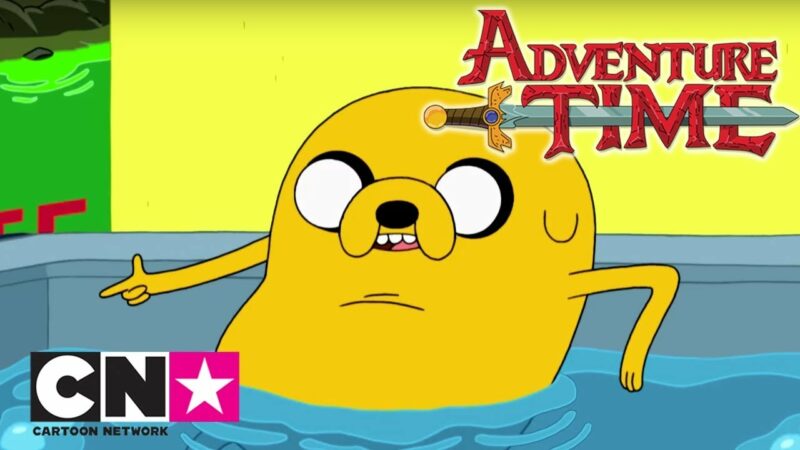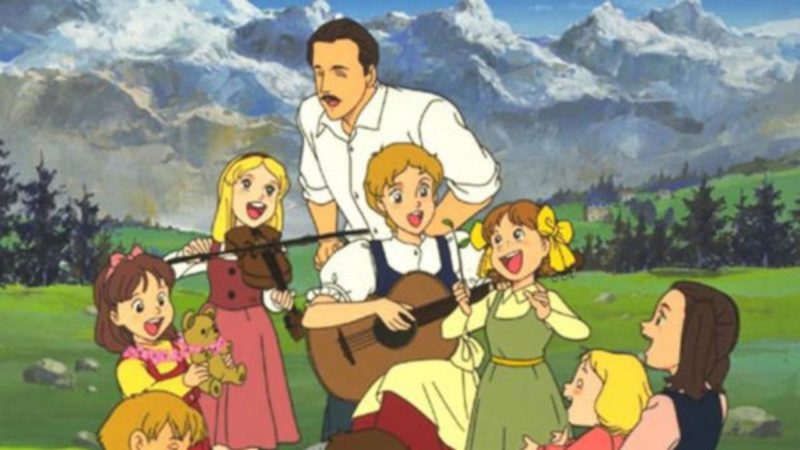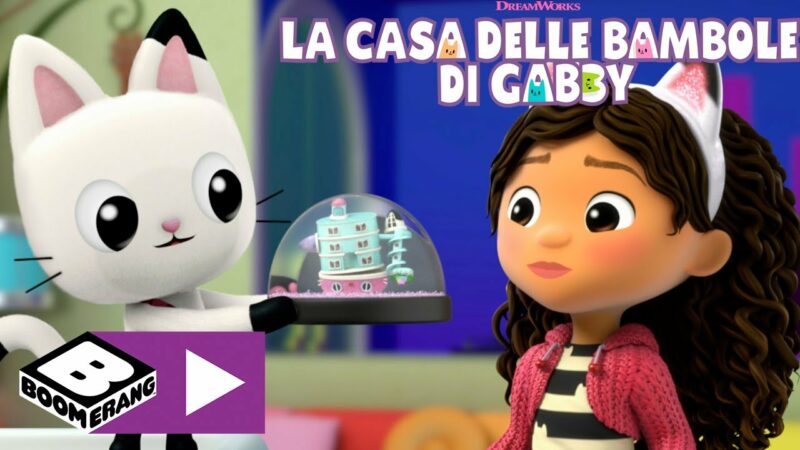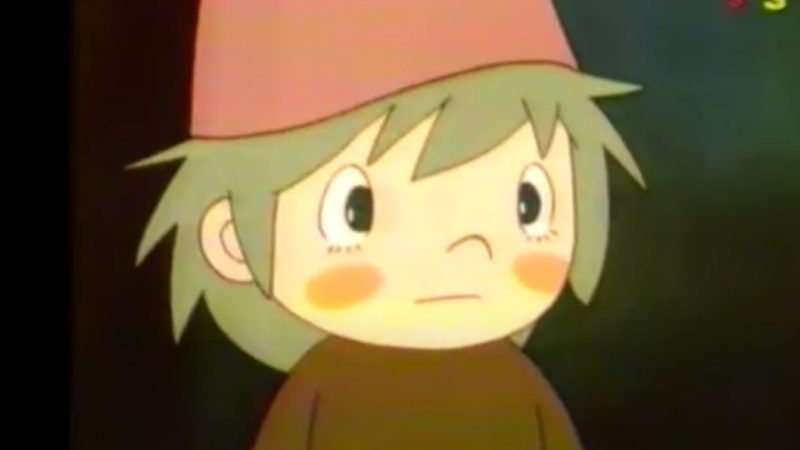Kitaro of the cemeteries - Gegege no Kitarō - The manga and anime
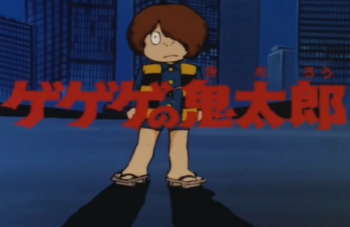
Kitaro of the cemeteries (ゲ ゲ ゲ の 鬼 太郎 Gegege no Kitarō in the Japanese original ) is a Japanese manga made in 1960 by Shigeru Mizuki. He is best known for his popularization of folkloric creatures known as yōkai, a class of spirit monsters to which all the main characters belong. This story was an early XNUMXth century Japanese folk tale performed on kamishibai. It has been adapted for the screen several times, such as anime, live action and video game. The word GeGeGe (ゲ ゲ ゲ) in the title is Japanese sound symbolism for a noise of laughter.
Selections from the manga and live-action theatrical films were released in English simply as Kitaro. The 2018 anime series is streamed with English subtitles as GeGeGe no Kitaro.
History

GeGeGe no Kitarō focuses on young Kitarō, the last survivor of the ghost tribe, and his adventures with other ghouls and strange creatures from Japanese mythology. Along with: the remains of his father, Medama-Oyaji (a mummified ghost tribe man reincarnated to dwell in his old eyeball); Nezumi-Otoko (the rat man); Neko-Musume (the cat-girl) and a host of other folkloric creatures, Kitarō strives to unite the worlds of humans and Yōkai.
Many storylines involve Kitarō taking on a host of monsters from other countries, such as Chinese vampire Yasha, Transylvanian Dracula IV, and other non-Japanese creations. In addition to that, Kitarō also collides with various evil yōkai who threaten the balance between Japanese creatures and humans.



Some plots explicitly refer to traditional Japanese tales, most notably the Momotarō folk tale, in which the young hero defends a Japanese territory from demons with the help of native animals. Kitarō's series “The Great Yōkai War” (妖怪 大 戦 争, Yōkai Daisensō) draws a great deal of influence from this story, with Kitarō and his yōkai friends driving a group of Western ghouls away from an island.
While Kitarō's character in GeGeGe no Kitarō is a friendly guy who genuinely wants the best outcome for both humans and yōkai, his previous incarnation in Hakaba Kitarō portrays him as a much more mischievous character. His apparent lack of empathy for humans combined with his general greed and desire for material wealth prompts him to act unseemly towards human characters, often leading them deceptively into nightmare situations or even hell itself.
Characters
Kitarō (鬼 太郎)
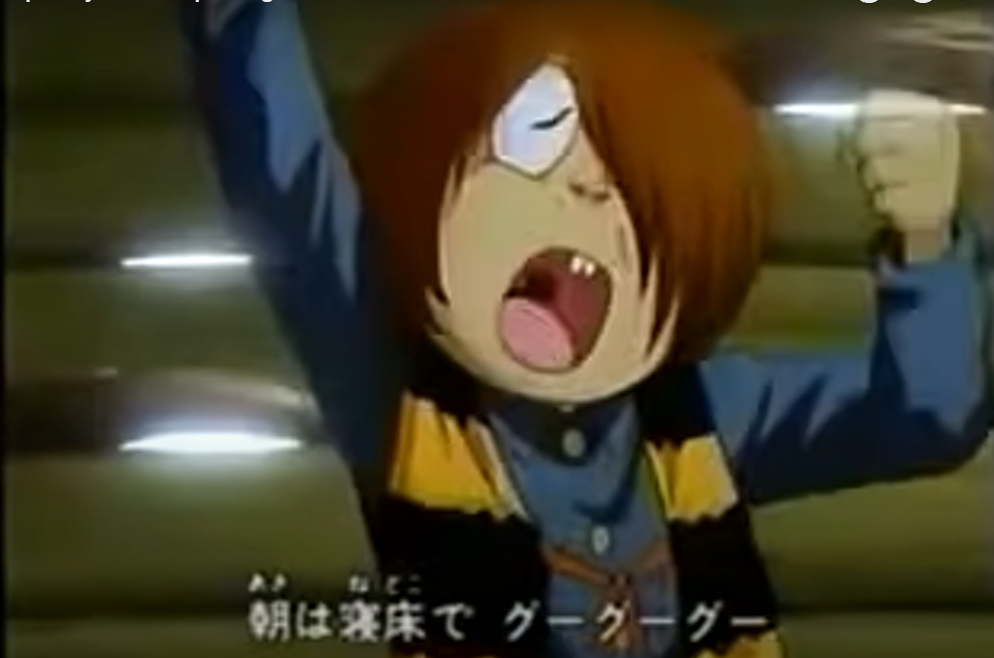


Kitarō is a yōkai boy born in a cemetery and, apart from his mostly decayed father, the last living member of the ghost tribe (幽 霊 族, Yūreizoku). His name, rendered with the character for oni (鬼) (a kind of ogre-like yōkai) can be translated as "Demon Boy", a name that refers to both his human and yōkai heritage. His left eye is missing, but his hair usually covers the empty socket. He fights for peace between humans and yōkai, which generally involves protecting the former from the wiles of the latter. When questioned in the 2007 film, Kitaro replies that he is three hundred and fifty years old. As a member of the ghost tribe, Kitarō has an assortment of powers and weapons.
While her powers feature prominently in the GeGeGe no Kitarō series, Hakaba Kitarō downplays Kitarō's supernatural abilities. In addition to having the power to travel unscathed through hell with the help of her Chanchanko, as well as the ability to regenerate from nearly any injury (as evidenced when her body is recoverable after being melted by Johnny in the mist), his powers are more of a deception than a fighting ability: something much more in line with traditional yōkai characters.
Medama-oyaji (目 玉 の お や じ, or 目 玉 親 父, literally "Father of the eyeball")



Medama-oyaji is Kitaro's father. Once a fully formed adult ghost, he died of disease, only to be reborn from his decayed body as an anthropomorphic version of his own eyeball. He looks small and frail, but he has a strong spirit and a great love for his son. He is also extremely knowledgeable about ghosts and monsters. He likes to stay clean and is often seen bathing in a small bowl. He has a great love for sake.
In the Kodansha International Bilingual Comics edition of 2002 and the subtitled Crunchyroll version of the 2018 anime, he is referred to as Daddy Eyeball.
Nezumi Otoko (ね ず み 男, "Rat Man")
Nezumi Otoko is a rodent-like human half-breed. He has been alive for three hundred and sixty years and has hardly ever taken a bath during that time, making it dirty, smelly and covered in bruises and sores. Although he is usually Kitarō's friend, Nezumi Otoko won't waste time devising vile plans or betraying his comrades if he thinks there is money to have or a powerful enemy to side with. He claims to be a graduate of the University of the Bizarre (怪 奇 大学, Kaiki Daigaku). It can immobilize even the strongest yōkai that approaches it with a stinging bout of flatulence. And, like cats and mice, he and Nekomusume can't stand being together.
Nezumi Otoko appears for the first time in the story "The Lodging House" (manga version for rent) as a servant of Dracula IV.
In the Kodansha International Bilingual Comics edition of 2002 and the subtitled Crunchyroll version of the 2018 anime, he is referred to as Ratman.
Neko Musume (猫 娘 or ね こ 娘, "Cat Girl")
A normally quiet yōkai girl who transforms into a scary feline monster with feline fangs and eyes when angry or hungry for fish. Predictably, he doesn't get along with Nezumi-Otoko. She seems to have a slight crush on Kitarō, who only sees her as a friend. In recent iterations (probably due to the recent anime fan service phenomenon), she is very fond of human fashion and is seen in different outfits and uniforms. It bears some resemblance to the bakeneko of Japanese folklore.
Neko Musume appears for the first time in the story "Neko-Musume and Nezumi-Otoko" (Weekly Shōnen Magazine version); however, another cat-girl named simply Neko (猫) appears in the previous stories "The Vampire Tree and the Neko-Musume" and "A Walk to Hell" (rental version).
In the Kodansha International Bilingual Comics edition of 2002 and the subtitled Crunchyroll version of the 2018 anime, she is called Catchick.
Sunakake Babaa (砂 か け 婆, "witch throwing sand")
Sunakake Babaa is an elderly yōkai woman who carries sand that she throws into her enemies' eyes to blind them. He serves as an advisor to Kitaro and his companions and runs a yōkai condominium. The original sunakake-baba is an invisible spirit throwing sand from Nara prefecture folklore.
Sunakake babaa first appears in a cameo as one of many yōkai attending a sukiyaki party in the story "A Walk to Hell" (rental version) before making a major appearance in "The Great Yōkai War" ( Shōnen Magazine version).
In the Kodansha International Bilingual Comics edition of 2002 and the subtitled Crunchyroll version of the 2018 anime, she is called the Sand Witch.
Konaki Jijii (子 泣 き 爺, "Old man crying children")
Konaki Jijii is a comical and distracted old yōkai who attacks enemies by clinging to them and turning to stone, immensely increasing his weight and mass and immobilizing them. He and Sunakake Babaa often work as a team. The original konaki jijii is a ghost that is said to appear in the woods of Tokushima prefecture in the form of a crying baby. When picked up by some unfortunate traveler, it increases its weight until it crushes it.
Konaki Jijii first appears in a cameo as one of many yōkai attending a sukiyaki party in the story "A Walk to Hell" (rental version) before making a major appearance in "The Great Yōkai War" ( Shōnen Magazine version).
In the Kodansha International Bilingual Comics edition of 2002 and the subtitled Crunchyroll version of the 2018 anime, he is referred to as Old Man Crybaby.
Ittan Momen (一 反 木 綿, "Cotton Roll")
Ittan Momen is a flying yōkai that resembles a strip of white cloth. Kitaro and friends often ride it on trips. The original ittan-momen is a spirit from the myth of Kagoshima prefecture that wraps itself around the faces of humans in an attempt to suffocate them.
Ittan Momen appears for the first time in the story “The Great Yōkai War” (Shōnen Magazine version).
In the Kodansha International Bilingual Comics edition of 2002 and the subtitled Crunchyroll version of the 2018 anime, it is called Rollo Cloth.
Nurikabe (ぬ り か べ, "plastered wall")
Nurikabe is a large wall-shaped, sleepy-eyed yōkai who uses his enormous size to protect Kitarō and his friends. The original nurikabe is a spirit that blocks the passage of people walking at night.
Nurikabe first appears in a cameo as one of the many yōkai attending a sukiyaki party in the story "A Walk to Hell" (rental version) before making a major appearance in "The Great Yōkai War" (version Shōnen Magazine).
In the Kodansha International Bilingual Comics edition of 2002 and the subtitled Crunchyroll version of the 2018 anime, he is called Wally Wall.
Nurarihyon (ぬ ら り ひ ょ ん)
Kitaro's old rival, he is depicted as an old man who comes to other people's homes and drinks their tea. He is also a member of Gazu Hyakki Yagyō and Nurarihyon has a member he always uses called Shu no Bon.
Beard back (バ ッ ク ベ ア ー ド, Bakku Beādo)
Back Beard is the leader of the Western yōkai and Kitarō's second greatest enemy after Nurarihyon. It is loosely based on the bugbear. It is a giant, round shadow with a single large eye in the center and several tentacles extending from its body. He appeared most prominently in the story “The Great Yōkai War”, where he rallied all the western yōkai in a war against the Japanese yōkai. He used his hypnotic powers to make Nezumi Otoko betray Kitarō and later hypnotized Kitarō himself. He has since appeared semi-regularly throughout the franchise.
Manga
Kitarō of the Graveyard was released as a rental manga in 1960, but was considered too scary for children. In 1965, renamed Hakaba no Kitarō, it appeared in Shōnen Magazine (after one of the publishers stumbled upon the kashibon and offered Mizuki a contract) and lasted until 1970. The series was renamed GeGeGe no Kitarō in 1967 and continued on Weekly Shōnen Sunday (1971), Shōnen Action, Shukan Jitsuwa and many other magazines.
In 2002, GeGeGe no Kitarō was translated by Ralph F. McCarthy and compiled by Natsuhiko Kyogoku for Kodansha Bilingual Comics. In 2002, three bilingual volumes (Japanese-English) were published.
Since 2013, compilation volumes of select 60s manga chapters have been published by Drawn & Quarterly, with English translations by Zack Davisson and an introduction by Matt Alt in the first compilation volume.
Anime
Seven anime adaptations were made from the Mizuki manga series. They were broadcast on Fuji Television and animated by Toei Animation.
The opening theme of all six series is "Gegege no Kitarō", written by Mizuki himself. It was sung by Kazuo Kumakura (1st, 2nd), Ikuzo Yoshi (3rd), Yūkadan (4th), Shigeru Izumiya (5th), the 50 Kaitenz (6th) and Kiyoshi Hikawa (7th). The song was also used in live-action movies starring Eiji Wentz. In the first film, he was played by Wentz's WaT partner Teppei Koike.
In January 2008, the sixth anime series (also produced by Toei) premiered on Fuji TV at night in the Noitamina block. This anime uses the title of the original manga, Hakaba Kitaro (墓 場 奇 太郎, Hakaba Kitarō), and unlike the usual anime versions, it is closer to Mizuki's manga and is not part of the existing remake canon. It also features a completely different opening theme (Denki Groove's "Mononoke Dance") and a closing theme (Shoko Nakagawa's "Snow Tears").
A seventh series, directed by Kōji Ogawa and written by Hiroshi Ohnogi, aired on Fuji TV on April 1, 2018, to celebrate the anime's 50th anniversary. The series ended on March 29, 2020, when it entered its final arc, the “Nurarihyon Arc,” on October 6, 2019. It was streamed on Crunchyroll, making it the first Kitarō anime available in North America.
An English dub aired as Spooky Kitaro on Animax Asia. The 2008 anime was released with English subtitles on DVD in Australia.
Technical data
Manga
Author Shigeru Mizuki
Editor Kodansha, Shogakukan
Magazine Weekly Shōnen Magazine, Weekly Shōnen Sunday
Target shonen
1 edition 1959 – 1969
Tankōbon 9 (complete)
1968 anime TV series
Regia I
Music Taku Izumi
Studio Toei Animation
Network Fuji Television
1st TV January 3, 1968 - March 30, 1969
Episodes 65 (complete)
Duration 25 min
1971 anime TV series
GeGeGe no Kitaro
Regia I
Music Taku Izumi
Studio Toei Animation
Network Fuji Television
1st TV October 7, 1971 - September 28, 1972
Episodes 45 (complete)
Duration 25 min
1985 anime TV series
GeGeGe no Kitaro
Regia Osamu Kasai, Hiroki Shibata
Film script Tetsuo Imasawa
Char. design Yoshinori Kanemori
Music Masahiro Kawasaki
Studio Toei Animation
Network Fuji Television
1st TV October 12, 1985 - March 21, 1988
Episodes 108 (complete)
Duration 25 min
1996 anime TV series
GeGeGe no Kitaro
Regia Daisuke Nishio
Film script Shun'ichi Yukimuro
Char. design Michi Himeno, Shingo Araki
Music Kaoru Wada
Studio Toei Animation
Network Fuji Television
1st TV January 7, 1996 - March 29, 1998
Episodes 114 (complete)
Duration 25 min
2007 anime TV series
GeGeGe no Kitaro
Regia Yukio Kawazu
Film script Keiichi Hasegawa, Riku Sanjo
Music Katsumi Horii
Studio Toei Animation
Network Fuji Television
1st TV 1st April 2007 - 29th March 2009
Episodes 100 (complete)
Duration 25 min
2008 anime TV series
Hakaba Kitaro
Regia Kimitoshi chioka
Film script Kenji Nakamura
Char. design Naoyoshi Yamamuro
Music Kaoru Wada
Studio Toei Animation
Network Fuji Television
1st TV January 10 - March 20, 2008
Episodes 11 (complete)
Duration 25 min
Source: https://en.wikipedia.org/


